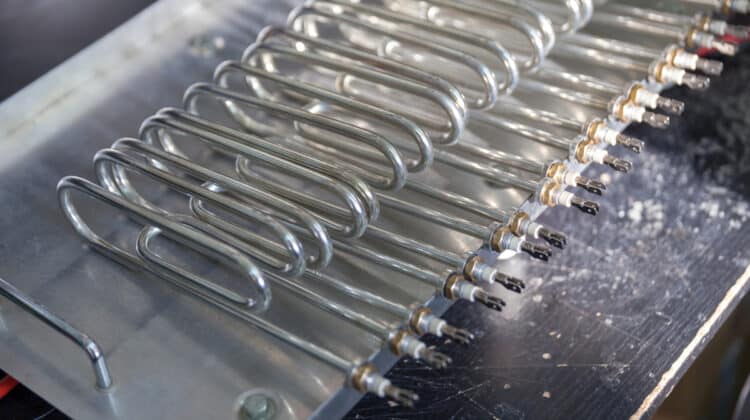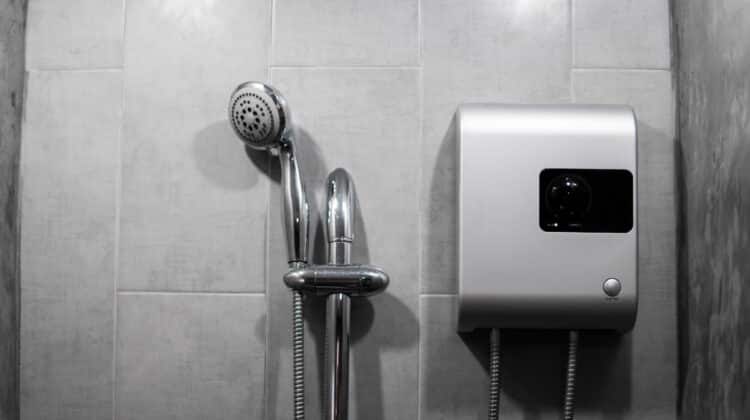
A water heater element is an essential part of your electric water heater. Whether your water heater is a tank or tankless, this is true. Like every part of your water heating system, the heating element will last for about ten years. But, it will rust and degrade with time. When that happens, it will become less and less effective in doing its job. But that is not the only problem. You will find that a rusted-out water heater element makes your water heater work harder. The also will also be less. It wastes energy and racks up the electricity bill. And when the time comes to change it, you may find the water heater element stuck.
These parts are small, affordable parts that are very easy to replace. And getting ahead of water heater element problems will be worth your while. The worst thing that can happen is your heater element getting stuck. It will be much harder to switch out.
If you have a water heater element stuck problem, we are here to help.
We will tell you everything you need to know about having a water heater element stuck in your water heater in this article. We will also share with you how to solve this problem.
Table of Contents
What Is The Job Of My Water Heater Element?
Gas-powered water heaters have a flame beneath the tank that creates heat to make your water hot. Electricity-powered water heaters have a heating element that does the same job. The water heater element is present in tank and tankless electricity-powered water heaters. Without this essential part, your electric water heater will not heat water.
What Causes Water Heater Element Failure
There are a few reasons why water heater elements fail.
- Mineral Buildup
- Trapped air or air pockets
- Malfunctioning thermostat
- Power surge
- Element breaks
- Poor wire connection
Ways To Tell Your Water Heater Element Is Bad
Water heaters are built to last because they have the biggest job in your water heater. They work almost constantly. But how long yours lives depends on how well you care for it.
A water heater can survive {six} 6 years. But with proper treatment, you can get yours to push for 13 years or more. All you need is regular maintenance.
Despite your best efforts, the parts of your water heater will degrade over time. You will find that you have to repair or replace a few of them. The water heater element is not exempt.
The water heater element is one part of your water heater that you do not need to change too often.
But changing it at least once every five years is the best practice. Leaving it longer will create the sticking problems I mentioned earlier. Your water heater will continue to work, but the element will start to rust.
Your water heater will start to burn more energy. Another five years down the line, you will begin to experience some water heating issues. Your electricity bill may also be higher.
At this point, you can test your water heater to ensure that it is the cause of the problem.
The majority of water heaters built today come with two elements – an upper and a lower one. When a water heater stops producing hot water, it is possible that the upper element is to blame.
Suspect the lower element if your water heater generates some hot water but not nearly as much as it is supposed to.
If your water heater’s circuit breaker keeps tripping, you may have a grounded element. A grounded element will cause electrical shortages.
Testing The Water Heater Element
If you notice the temperature of your water drops by considerable degrees, there is a problem. There are a few other parts of your water heater that could create water heating issues.
The thermostat is one such example. There is only one way to determine if the element is the culprit. That is by testing it.
You could hire a professional electrician who can run the test and replace the element for you. But that might put you out up to $750. Not everyone has that kind of money lying around. It might be a good idea to learn how to test the water heater element yourself and how to replace it.
To run the test, you need the following.
- Gloves
- Screwdriver
- Safety goggles
- Digital multimeter
Turn The Breaker Off
The first step is ensuring your safety. Turn off the breaker feeding electricity to your water heater.
Take Off The Side Panel Of The Water Heater
Open the metal cover for the hot water. There should be a metal panel inside held in place by a couple of screws. Remove the screws and the panel.
Store the screws somewhere safe. You will need to use them again later.
Depending on the size of your water heater, you may see two panels. Uncover both of them.
Unplug The Insulation Material
For this part, you should wear your gloves and your goggles.
Behind the panels, you will find insulation. Clear it out of the way. Also, store this material somewhere safe as you will need to put it back as well.
Check to see whether there is a cover over the thermostat. Not all water heaters come with covers on the thermostat.
If the thermostat of the water heater you have has a cover, remove it. If there is none, then this part is not for you.
Ensure The Water Heater Has No Power
Double-check to make sure the power is off. To do that you need a noncontact voltage meter. Hold it near the wire connecting the element to the thermostat.
If the voltage detector beeps or a light flashes, the water heater is still connected to the power supply. Before continuing with the task, make sure the power is entirely turned off.
Find The Element Endpoints
Remember, your water heater may have two elements, and either one or both might be failing. If you find two, you need to test both.
Now you will not see the body of the elements since they are inside the panel. But you will see the ends.
Test Using The Multimeter
Now it is time to run the test. Turn the dial on the multimeter to its lowest setting. That setting will be Rx1k or resistances multiplied by 1000. Examine the lower body of the tank of the water heater carefully. The wattage and ohms will be engraved.
- For water heaters with a 3500-watts element, the multimeter is going to read 16.
- For water heaters with a 4,500-watts element, the multimeter is going to read between 12-13.
- For water heaters with a 5,500-watts element, the multimeter is going to read between 10-11.
Take one probe of the multimeter and press it to the screw connected to the element’s face. Because there are no terminals on water heater element, you do not have to be concerned about which to test first.
Be sure you are only checking the element and not the other electrical components linked to it. Connect the prongs of the multimeter to the element screw’s tip.
Check the multimeter readings to see if they match the specifications listed above. If the resistance is very low, such as 1, the water heater element is defective. If you have no reading, the water heater element is also defective. It needs replacing.
If you have a second element, run the test on it too.
Put the insulation back in place if you do not have a new element to replace the old one on hand. Close up the old one until you buy a replacement.
Go out to buy your new element and then come back to complete the replacement job. I recommend taking the old element with you so that you can find the correct replacement.
How To Change A Water Heater Element
These are the tools you will need to test your water heater element. Remember, the element might be difficult to remove, so you will need the right tools to get it out.
- A new water heater element
It is a good idea to have the new water heater element on hand. That way, there is no need to close up the water heater only to have to come back to open it up again. - A wrench for water heater elements
Do not use a regular wrench to complete this job. It may mess with the element and ruin it before you finish the project. Use a wrench specific for water elements instead. - A screwdriver – it’s handy for removing and replacing screws on the panel. You can also use it to pry out water heater element stuck.
- A hose – it’s ideal for draining some of the water out of the tank.
Now, with your tools in hand, it is time to replace your water heater element. We will go through it one simple step at a time. But first, what happens if you want to remove the element and find it stuck.
How To Remove A Stubbornly Stuck Water Heater Element
There are ways to get around this problem.
Use WD-40
Spray the element with enough WD-40 so that it is soaked.
Use A Slippery Solution
If you have no WD-40 on hand or it does not work, try using soap and water. Do not pour the solution over the element. Use a toothbrush or some other small implement to apply it bit by bit.
Use A Water And Vinegar Mixture
Apply this mixture bit by bit as well, scrubbing away at rust and grime bit by bit.
Use A Ratchet Strap
Sometimes, the element might not be stuck, but the wrench will not hold. It keeps slipping. In this case, you can use a ratchet strap.
Put the element wrench over the element.
Wrap the ratchet strap around the tank of your water heater and over the wrench to secure it in place. Now try to turn it again.
You need to follow the same steps mentioned above to get to the elements.
- Turn The Water Heater Off
- Flip the switch on the breaker that gives power to your water heater so it has no current.
- Remove The Cover
- Open The Panel
- Take The Insulation Out
You should be able to see your water heater elements by now. It is time to work. Follow these steps if you have a water heater element stuck in your water heater.
Drain The Tank
Connect a hose to the drain valve to drain the water. Put the other end of the hose to a floor drain or drag it to a nearby exit. I do not recommend using a bucket to do this. Depending on the size of your water heater, there may not be a container large enough to collect all the water. Even if there was, it would be hard to dump the water outside after unless you plan to throw it out but the buckets.
Remove The Element
If the element is not stuck or the wrench does not slip, this part should be easy. But if you have some difficulty getting the element out, use the methods above. If none of these work, then you will have to call in a professional to help.
When you have the element loose, proceed to take it out. If you need to, use the element screws or more force to help you get it out but try not to cause damage to your water heater.
Keep a close eye on where you made every disconnection. When the time comes, you know exactly where which part and wire goes.
Some people try to repair the element by cleaning it, but it is not worth it. Remember, faulty water heater elements waste energy. Buying a new element is cheaper, and it will be more reliable. You need to find one that is compatible with the water heater you have.
These Are Water Heater Element Tips
It does not make sense to put in a new element if the conditions it has to work under have not changed. You will be dealing with the same water heater element stuck issues in the future.
Here are some helpful tips that can extend the life of your water heater element.
Do regular maintenance on your water heater. That is one sure way to get it to live past ten years and work the way it should.
Hard water is hard on your appliances. The buildup of limescale can take years off their lifespan. If you have hard water, getting a water softener is one way to get the parts of your appliances to last longer.
Check your circuit to ensure it works as it should. If you have a high voltage problem, it could burn the element heating your water heater.
Do not buy an incompatible or low-grade element. Spend a few extra dollars on the genuine article. It will last longer.
How Much Does It Cost To Replace Water Heater Element Stuck?
Not everyone thinks they are DIY savvy, and that is okay. But hiring a professional to replace your water heater element might cost you $75. Or you might be unlucky and find yourself paying in the region of $750. There are a lot of variables.
It might be a good idea to learn how to replace a water heater element stuck because of rust.
You will save yourself a lot of money in the end.





